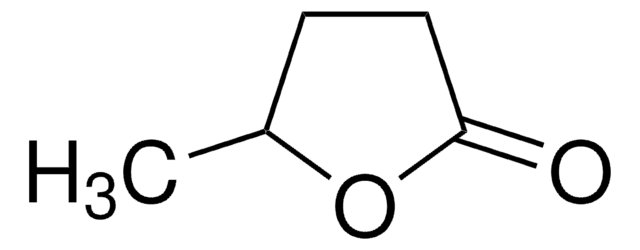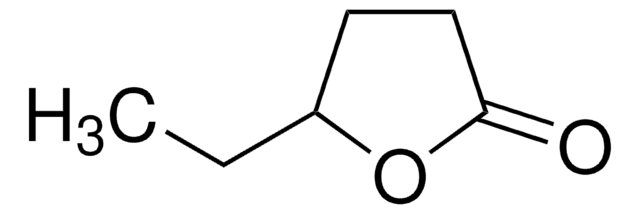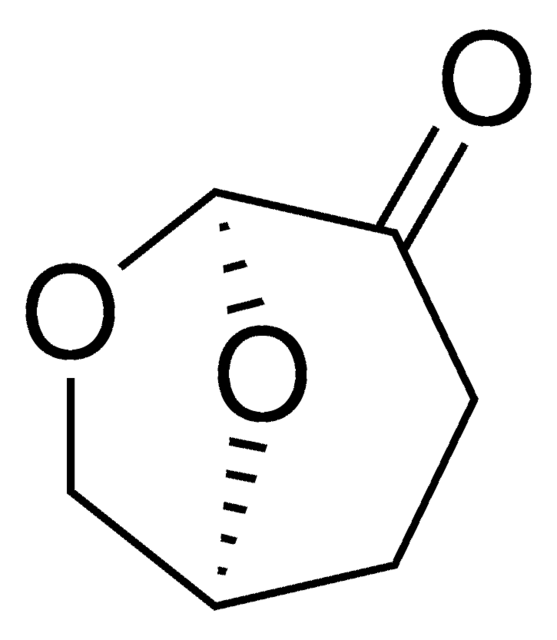W255611
γ-Hexalactone
natural, 97%, FG
Sinonimo/i:
γ-Caprolactone, γ-Ethyl-γ-butyrolactone
About This Item
Prodotti consigliati
Grado
FG
Kosher
natural
Conformità normativa
EU Regulation 1334/2008 & 178/2002
FDA 21 CFR 117
Saggio
97%
Caratteristiche più verdi
Less Hazardous Chemical Syntheses
Use of Renewable Feedstocks
Learn more about the Principles of Green Chemistry.
sustainability
Greener Alternative Product
Indice di rifrazione
n20/D 1.439 (lit.)
P. ebollizione
219 °C (lit.)
Densità
1.023 g/mL at 25 °C (lit.)
applicazioni
flavors and fragrances
Documentazione
see Safety & Documentation for available documents
Allergene alimentare
no known allergens
Categoria alternativa più verde
Organolettico
creamy; herbaceous; sweet
Stringa SMILE
CCC1CCC(=O)O1
InChI
1S/C6H10O2/c1-2-5-3-4-6(7)8-5/h5H,2-4H2,1H3
JBFHTYHTHYHCDJ-UHFFFAOYSA-N
Cerchi prodotti simili? Visita Guida al confronto tra prodotti
Categorie correlate
Descrizione generale
Applicazioni
Azioni biochim/fisiol
Avvertenze
Warning
Indicazioni di pericolo
Consigli di prudenza
Classi di pericolo
Eye Irrit. 2
Codice della classe di stoccaggio
10 - Combustible liquids
Classe di pericolosità dell'acqua (WGK)
WGK 2
Punto d’infiammabilità (°F)
208.4 °F - closed cup
Punto d’infiammabilità (°C)
98 °C - closed cup
Scegli una delle versioni più recenti:
Possiedi già questo prodotto?
I documenti relativi ai prodotti acquistati recentemente sono disponibili nell’Archivio dei documenti.
I clienti hanno visto anche
Global Trade Item Number
| SKU | GTIN |
|---|---|
| W255611-100G-K | 4061838115430 |
| W255611-SAMPLE-K | 4061834355380 |
| W255611-1KG-K | |
| W255611-500G-K | 4061834404392 |
Il team dei nostri ricercatori vanta grande esperienza in tutte le aree della ricerca quali Life Science, scienza dei materiali, sintesi chimica, cromatografia, discipline analitiche, ecc..
Contatta l'Assistenza Tecnica.












